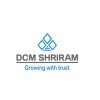Filter interviews by
Atul QC Executive Interview Questions, Process, and Tips
Atul QC Executive Interview Experiences
1 interview found
I applied via Walk-in and was interviewed before Mar 2019. There were 3 interview rounds.
Interview Questionnaire
6 Questions
- Q1. What is chromatography ?
- Ans.
Chromatography is a technique used to separate and analyze mixtures of substances based on their different properties.
Chromatography involves a stationary phase and a mobile phase.
The stationary phase is a solid or liquid material that retains the components of the mixture to be separated.
The mobile phase is a liquid or gas that carries the mixture through the stationary phase.
Different components of the mixture intera...
- Q2. What is pH ?
- Ans.
pH is a measure of the acidity or alkalinity of a solution.
pH stands for 'potential of hydrogen'.
It is a logarithmic scale ranging from 0 to 14.
A pH of 7 is considered neutral, below 7 is acidic, and above 7 is alkaline.
Each unit change in pH represents a tenfold change in acidity or alkalinity.
pH is commonly used in various fields such as chemistry, biology, and environmental science.
- Q3. What is nitration reaction ?
- Ans.
Nitration reaction is a chemical reaction in which a nitro group (-NO2) is introduced into a molecule.
Nitration is a type of electrophilic aromatic substitution reaction.
It involves the substitution of a hydrogen atom on an aromatic ring with a nitro group.
The reaction is typically carried out using a mixture of nitric acid and sulfuric acid as the nitrating agent.
Nitration reactions are commonly used in the synthesis ...
- Q4. What is karl fisher reaction and how instrument. Calibrated ?
- Ans.
Karl Fischer reaction is a method for determining the water content in a sample. The instrument used for this reaction is calibrated using standard solutions.
Karl Fischer reaction is a chemical reaction that involves the titration of water with iodine.
It is commonly used in analytical chemistry to measure the moisture content in various substances.
The reaction is based on the principle that iodine reacts with water to ...
- Q5. What is normality ?
- Ans.
Normality refers to the state of being normal or conforming to a standard or norm.
Normality is a concept used in various fields to define what is considered typical or expected.
It is often used to describe the behavior, characteristics, or values that are within the range of what is considered normal.
Normality can vary depending on the context and can be subjective or objective.
In statistics, normality refers to the di...
- Q6. What are main components of HPLC ?
- Ans.
The main components of HPLC are the mobile phase, stationary phase, pump, injector, column, detector, and data acquisition system.
Mobile phase: The solvent or mixture of solvents that carries the sample through the system.
Stationary phase: The solid or liquid phase that retains the analytes based on their interactions.
Pump: Responsible for delivering the mobile phase at a constant flow rate.
Injector: Introduces the sam...
Interview Preparation Tips
Interview questions from similar companies

I applied via Naukri.com and was interviewed before Jul 2020. There were 6 interview rounds.
Interview Questionnaire
3 Questions
- Q1. Distillation based technical question
- Q2. Troubleshooting and energy efficiency realated
- Q3. Process related
Interview Preparation Tips

I applied via Referral and was interviewed in Aug 2020. There were 6 interview rounds.
Interview Questionnaire
7 Questions
- Q1. How many types of reactor you handle and troubleshooting? What is the Make of reactor, vessel and pumps?
- Ans.
I handle multiple types of reactors and have experience in troubleshooting them. I am familiar with various makes of reactors, vessels, and pumps.
I have experience in handling batch reactors, continuous stirred tank reactors (CSTR), and plug flow reactors (PFR).
I am skilled in troubleshooting issues related to reactor temperature, pressure, and mixing.
I have worked with reactors from different manufacturers such as ABC...
- Q2. Types of mechanical seal? And its parameters?
- Ans.
Mechanical seals are used to prevent leakage between two rotating parts in a machine. There are various types of mechanical seals.
Types of mechanical seals include pusher, non-pusher, cartridge, and split seals.
Parameters of mechanical seals include seal face material, seal face design, and secondary sealing elements.
Seal face materials can be ceramic, carbon, or tungsten carbide.
Seal face design can be single or doubl...
- Q3. Which types of column you handles? What types of troubleshooting in it?
- Ans.
I handle various types of columns and troubleshoot issues related to them.
I handle columns such as HPLC, GC, ion exchange, and size exclusion.
I troubleshoot issues related to column clogging, peak broadening, and retention time shifts.
I also perform regular maintenance and calibration to ensure optimal column performance.
For example, if I notice a decrease in column efficiency, I may check for leaks, adjust the flow ra...
- Q4. Which kind of equipment used for vacuum system? What are you know about Dry vacuum pumps and its makes?
- Ans.
Vacuum systems use various types of equipment, including dry vacuum pumps.
Vacuum systems require pumps to create and maintain a vacuum.
Dry vacuum pumps are oil-free and use non-contacting parts to create a vacuum.
Examples of dry vacuum pump makes include Edwards, Leybold, and Agilent.
Other types of vacuum pumps include rotary vane, scroll, and turbomolecular pumps.
- Q5. How many manpower you have and how will you handle it? What is the daily activities and planning for the next days?
- Q6. How many fabrication, insulation & other party and How you manage them as per job?
- Ans.
We work with multiple fabrication, insulation and other parties as per job requirements and manage them through effective communication and coordination.
We identify the required parties for each job and establish clear communication channels with them.
We ensure that all parties are aware of their responsibilities and timelines.
We regularly monitor the progress of each party and address any issues that arise promptly.
We...
- Q7. What is the procedure for the out side vendor and follow up?
- Ans.
The procedure for outside vendor involves identifying the vendor, negotiating terms, creating a contract, and following up on deliverables.
Identify the vendor and their capabilities
Negotiate terms and pricing
Create a contract outlining expectations and deliverables
Follow up regularly to ensure timely delivery and quality
Maintain open communication with the vendor throughout the process
Evaluate vendor performance and ma
Interview Preparation Tips

(2 Questions)
- Q1. My first technical round was taken telephonic bcoz of covid pandemic.
- Q2. 1.In previous organisation roles & responsibilities. 2.what is your contribution for previous organisation. 3. About Design knowledge
(2 Questions)
- Q1. Second round completed by face to face interview in Ranjitnagar location.
- Q2. 1.Distillation column design 2.Heat balance, material balance 3.IPDS,EPDS ,PDS 4.BASIC Chemical engineering concepts.
Interview Preparation Tips
Free surrounding for work.
Best organization for carrier.

I applied via Naukri.com and was interviewed in Jun 2023. There were 3 interview rounds.

(3 Questions)
- Q1. Tell me about your self
- Q2. What was your qualification
- Q3. Tell me about your experience
Letter writing,English skills ,aptitude questions

Senior Executive Interview Questions & Answers
Kansai Nerolac Paintsposted on 22 Aug 2023

Explain with previous experience
(1 Question)
- Q1. Regarding previous experience

I applied via Recruitment Consulltant and was interviewed in Nov 2021. There were 2 interview rounds.

(1 Question)
- Q1. Ask about previous company and resin knowledge
Interview Preparation Tips

(1 Question)
- Q1. Technical background

I applied via Recruitment Consulltant and was interviewed in Aug 2023. There were 2 interview rounds.
(2 Questions)
- Q1. Tall me about your salf
- Ans.
I am a highly experienced executive with a proven track record in leading successful teams and driving business growth.
Proven track record in leading successful teams
Strong ability to drive business growth
Extensive experience in executive roles
Excellent leadership and communication skills
- Q2. What is looking in project your company
(2 Questions)
- Q1. Describe your self
- Q2. Describe yourself

I applied via Referral and was interviewed in May 2021. There were 4 interview rounds.
Interview Questionnaire
1 Question
- Q1. Regarding the past projects in the previous organization and KRA details.
Interview Preparation Tips
Atul Interview FAQs
Tell us how to improve this page.
Atul Interviews By Designations
- Atul Assistant Manager Interview Questions
- Atul Joint Manager Interview Questions
- Atul Senior Executive Interview Questions
- Atul Deputy Manager Interview Questions
- Atul Area Manager Interview Questions
- Atul Executive Interview Questions
- Atul Executive Production Interview Questions
- Atul Production Manager Interview Questions
- Show more
Interview Questions for Popular Designations
- QC Chemist Interview Questions
- QC Officer Interview Questions
- Senior Executive QC Interview Questions
- QC Microbiologist Interview Questions
- Quality Control Officer Interview Questions
- QC Analyst Interview Questions
- QA Officer Interview Questions
- Senior Executive Quality Control Interview Questions
- Show more
Interview Questions from Similar Companies
Fast track your campus placements
Atul QC Executive Reviews and Ratings
based on 6 reviews
Rating in categories
|
Senior Executive
571
salaries
| ₹3 L/yr - ₹7.8 L/yr |
|
Assistant Manager
498
salaries
| ₹3.8 L/yr - ₹10.5 L/yr |
|
Deputy Manager
247
salaries
| ₹4.8 L/yr - ₹14.8 L/yr |
|
Joint Manager
242
salaries
| ₹6.3 L/yr - ₹21 L/yr |
|
Executive
114
salaries
| ₹2 L/yr - ₹5.3 L/yr |

Berger Paints

Pidilite Industries

SRF

Kansai Nerolac Paints
- Home >
- Interviews >
- Atul Interview Questions >
- Atul QC Executive Interview Questions






















